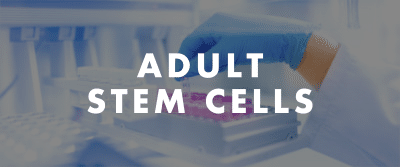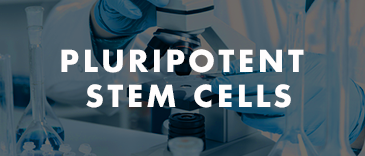Umbilical Stem Cells are Adult Stem Cells taken from the umbilical cord. Their function is to be a repair system for the human body because they can divide themselves without limit to replenish other cells as long as the person is still alive. When a mother gives birth to a healthy baby, she donates umbilical cord blood that carries the progenitor’s cells; these Umbilical Cord Stem Cells have been used for so many years now in adults and children to treat diseases such as cancer and blood disorders, without having any secondary diseases (effects).
About the Umbilical Stem Cells therapy, most children receive the Stem Cells via a subcutaneous injection right into the tissues adjacent to the umbilicus, so cells can migrate from that area and start circulating in few hours or days. In teenagers and adults, the Stem Cells are given by IV drip. Blood may be reinjected so the number of growth factors given with the Stem Cells increase. The first changes usually appear by the third or fourth week after the treatment is done, and the main changes come during the first 180 days after the treatment. In rare occasions, some patients discover new improvements after a year or more, but on most people they start to diminish after six months.
The first two weeks after the treatment are considered very important because it is when the Stem Cells start to create safe homes to grow and multiply into more healthy Stem Cells. That is why patients need to avoid anything that can kill off the Stem Cells (by following a diet given by the doctors), and instead promote healthy Stem Cell growth.

The advantages of the umbilical cord blood are that it does not need a perfect human leukocyte antigen tissue match and can be used allogenically.
The umbilical cord blood contains hematopoietic Stem Cells that are used to generate red blood cells and cells of the immune system. These types of Stem Cells are also used to treat blood disorders such as Leukemia, Anemia and immune system conditions. Though these stem cells had been used mostly in children’s treatments, nowadays, they have gained more use in adults that need chemotherapy treatments.
The Mesenchymal Stromal Cells are another type of cells that can also be taken from the umbilical cord blood and they grow into the bone, cartilage, and other tissues. A lot of research has been made about these types of cells in order to discover all their benefits for patients.

Some of the main diseases that can be treated using Umbilical Cord Stem Cells therapy are:
- Leukemia: This cancer affects the leukocytes of the blood immune system. Stem Cell transplants can help in the treatment of acute, chronic and juvenile forms of the different forms of Leukemia.
- Lymphoma: This type of blood cancer affects the leukocytes that are circulating in the blood and lymph nodes. Stem cells transplants help treat either Hodgkin or Non-Hodgkin Lymphoma.
- Anemia: Umbilical Cord Stem Cells treatment can help heal sickle Cell Anemia, Beta Thalassemia Major, severe combined immunodeficiency (SCID) condition, Red Cell Aplasia, Multiple Myeloma, Plasma Cell Leukemia, and other blood proliferated disorders.
- Hurler Syndrome, Hunter Syndrome, ALD, Lesch Nyhan Syndrome, Osteopetrosis and other inherited disorders of immune and metabolic system.
- Neuroblastoma, Retinoblastoma and Medulloblastoma tumors.
- How is quality control in umbilical cord blood stem cell programs?
- How many stem cells are contained in each vial?
- Is there a best time to go for treatment?
- What is the general sequence for enrolling in the stem cell program?
- How are the stem cells given?
- Why is a subcutaneous injection used on most children while an IV approach on most adults?
- How long does it usually take before some change is seen?
- Some patients have seen results almost from the moment the cells entered their bodies, how can the stem cells work that fast?
- Is the reported healing and recovery due to the stem cells or to something else?
- How do the stem cells know where to go in the body?
- Can stem cell treatment work if the injury or condition is old?
- Is there anything done at the time of treatment to enhance the likelihood of stem cells entering the brain?
- What dietary or lifestyle restrictions should be observed prior to and following stem cell treatment?
- Recommendations for children being treated:
- Recommendations for adults being treated:
- What are some factors that can increase stem cell growth?
Umbilical cord blood is donated from healthy mothers who give birth to full term, normal, healthy babies, it is then screened for major communicable diseases according to the American Association of Blood Banks standards. Only Type O, Universal Donor type is accepted. Blood that passes the test at this level is then sent to a laboratory where skilled technicians use special technology to separate CD34+/CD133+ cells, CD44- cells, and other subtypes. These progenitor cells are then expanded in a medium that is free from any animal products. After peak expansion is reached, the stem cells are frozen in liquid nitrogen and stored. As for safety concerns, Umbilical cord stem cells have been used for over 18 years in both adults and children in the treatment of cancer and blood disorders, with no reports of secondary diseases or cancers from the use of the cord blood.
Most commonly vials containing 5 million hUCSCs are utilized.
The decision to have or not to have stem cell therapies is difficult for all involved. The decision as to what type of cells to use, how to give the cells, what tests need to be done before hand and what treatments need to be done before and after the treatment all vary from case to case. Such questions are best answered by doctors after copies of the patient’s medical records and enrollment forms have been received and reviewed.
- Find out as much as you can about stem cells.
- To maximize the benefits of the stem cell treatment, it is advised that the patient start a detoxification program to reduce or eliminate infections, inflammation in areas difficult from primary concern, heavy metal toxicity, chemical toxins, and nutritional deficiencies. This is particularly important for autistic children and those with MS, ALS, Parkinson’s, and Alzheimer’s disease.
- If the patient decides on the treatment, they can fill out an enrollment form at their chosen medical facility then copies of the patient’s recent medical records and enrollment form are faxed to the facility.
- Based on the medical records, the staff will recommend the type and amount of cells needed for the patient’s health condition.
- If and when the patient feels comfortable taking the next step, they can make an appointment for this treatment.
- After the treatment, follow up consultations are needed in order to track the patient’s progress which are done on a regular basis via e-mail or phone. Follow up medical record will be requested approximately four to five months after treatment.
Most infants and small children are given the stem cells via a subcutaneous injection into the tissues adjacent to the umbilicus. Older children and adults are typically given stem cells by IV drip. Blood may be drawn and reinjected to increase the number of growth factors given with the stem cells. Some neurological patients receive hUCSCs by direct catheter implant into the damaged areas of the brain, a procedure performed by an interventional radiologist and operating room team.
Research has shown that injecting cells subcutaneously near the umbilicus produces notable results. It appears the cells migrate from the injection site and enter the circulation over a period of hours and perhaps days. Since an IV approach is not always easily done on some patients, especially infants and small children, the “subQ” approach is routinely employed on these patients. In older patients, direct introduction of the cells into the circulation via IV is used. There are some neurological conditions for which a direct infusion of cells into the circulatory system is deemed the best approach to treating the patient. The use of a subcutaneous IV or combination route is decided based on clinical study and past stem cell patient responses.
It is reported that the first changes appear by the 3rd to 4th week after treatment and major changes are seen during the first 180 days following treatment. They may then plateau and diminish over time, although some patients report seeing new improvements more than one year following a single treatment.
There is no way the cells could engraft, differentiate and begin “doing their thing” in a matter of minutes or hours. It is felt that the initial results are attributable to growth factors present in the stem cell medium. Also, the cells themselves may stimulate the body to create growth factors and other compounds that foster cell repair and replacement.
First, the umbilical cord stem cells begin to produce a specific growth factor almost immediately after injection which has the power to rescue neurons from a lack of oxygen, associated with conditions that include a stroke or traumatic brain injury. This glial derived growth factor activity can rescue up to 60-70% of dying neurons if administered soon after the injury. In later stages and in younger patients such as those suffering from cerebral palsy, one type of stem cell (CD34+) has a tendency to produce “white matter cells”. These cells make up the “wiring” that connects one neuron to the next and to the muscles of the body. When you look at a cross section of the brain, the white matter makes up about 60% of the brain’s inner volume. The gray matter is the neurons which are spread over the surface of the brain. While the CD34+ stem cells have been reported to promote some neurons in addition to the glial white matter, the primitive progenitor cells (AC133+) more readily assist with neuronal growth. Besides rescuing dying tissues by the action of glial derived neuron factors, the stem cells may also save cells by a process called “ cell fusion”. In this method, the stem cells seek out sick and dying cells and melt their body into the dying cell body. This combination cell then has the vitality of the stem cell and its cell nucleus. Such fusion is more often in brain cells that have hundreds of connections with other cells.
Many studies have shown that stem cells “home” in on specific chemical signals given off by injured, damaged or diseased tissues or organs.
When these signals are weak they require intervention to increase their numbers. There are several ways to amplify these chemical signals. Pre-stem cell treatment programs, comprehensive 5 to 35 day outpatient programs, are recommended in such cases.
One of the difficulties in getting hUCSCs into the brain lies in the blood brain barrier which slows or blocks entry of many things into the central nervous system including stem cells. Children and adult patients with Multiple Sclerosis and many other neurological diseases have “leaky” blood brain barriers due to the inflammation. Fortunately, a formula has been developed which temporarily opens up the blood brain barrier long enough for a great many stem cells to get into the brain.
In general, think in terms of what you should eat if you were a young woman who has just become pregnant.
- The body should be as pure as possible for the stem cells to grow and differentiate into the specialized cells needed to help repair the disease or injured area.
- Stem cells generally have two week intervals for their growth and expansion in numbers. Through the entire body, all aspects of repair are going on each day. However, in the case of stem cell treatments, the first two weeks may be considered important for the stem cells creating safe homes for growing and multiplying into more and more healthy stem cells. Therefore, for the first two weeks after the treatment, it is important to avoid the things that kill off stem cells and do more of the things that promote healthy stem cell growth.
- As the stem cells begin to migrate to the injured tissue and then divide into specialized cells that can replace the damaged and dead cells, there is a need to assist the first round of cell differentiation as well as continue to support the next two weeks cycle of new stem cell growth and multiplication promoted by the increased growth factors.
- During the second and third month, as the new neurons and glial cells integrate into the neural network, the stem cell patient can go on a maintenance diet that continues healthy living but is less restrictive.
- Consume healthy, fresh foods and drinks.
- Avoid places and foods that provoke allergies.
- Reduce environmental and dietary toxins as much as possible.
- Minimize stress.
- Maintain a positive attitude.
- Appreciate the child’s smallest successes. The small changes eventually lead to big changes.
- Avoid red meat for at least 4 days prior and 2 weeks following hUCSC treatment, especially those with neurological disorders. Red meat contains fats that are pro-inflammatory and inflammation can kill off stem cells.
- Avoid grilled and fried foods.
- Avoid alcoholic beverages for at least 1 week prior to and 6 months following treatment. Alcohol inhibits nerve growth factor and is toxic to new neurons.
- Avoid tobacco at least 1 month prior to and 6 months following treatment. Tobacco is not just tobacco. It also includes carcinogens and heavy metals. Smoking restricts the blood flow and leads to reduced circulation in various parts of the brain.
- For the first week following the treatment, eat sparingly of anti-cell proliferative foods such as onions, garlic, ginger, apples, berries, citrus fruits, honey, red grapes, cauliflower, broccoli, Brussels Sprouts, and almonds. These foods should be resumed after the first week because they are generally high in antioxidants.
- Avoid sweets, including sugars, candies, carrot juice, and fruit juices during the first month following stem cell therapy. These foods can produce rapid fluctuations in blood sugar levels, which is not good for damaged brain cells.
- Avoid herbal supplements and over-the-counter medications for 1 month after the treatment, unless directed by your physician.
- Vitamin-Mineral supplements that have been working for the patient can be continued through the treatment. These nutrients usually provide some antioxidant protection for stem and progenitor cell survival.
- Limit consumption of seeds and nuts. While these foods are generally nutritious, they also contain L-arginine, which can increase nitric oxide in the central nervous system and promote inflammation. This is especially applicable to patients with neurological challenges involving central nervous system inflammation.
- Avoid Monosodium glutamate. MSG is toxic to new neurons. MSG may also be included in malt extract, malt flavoring, bouillon, broth stock, flavoring, natural flavoring, natural beef or chicken flavoring, seasoning or spices. Eating fresh foods reduces this risk.
- Avoid emotional and physical stress. Stress stimulates the adrenal glands to secrete adrenal hormones which increase glutamate. Some glutamate is needed for learning and memory but too much glutamate kills off new neurons, especially in the hippocampus which is the center for learning and memory.
- Avoid foods that cause allergies. Allergies increase inflammation which can attract the stem cells to areas different from the person’s main health concerns. The cytotoxic products that are released in inflammatory conditions can also kill off the stem and progenitor cells.
- Women should not undergo hUCSCT during or just following a menstrual period. The inflammation associated with menstruation may compromise hUCSC activity.
- A good night’s sleep. During the first part of the night which is from 10pm to 3am, growth factors such as human growth hormone are stimulating stem cell growth in the brain as well as the body. From 3am to about 7am, cortisol is stimulating an increase in glutamate to assist with memory consolidation and the incorporation of brain cells into the neural network. Both aspects of sleep are important for cell repair and learning and memory.
- Don’t fight against fatigue. If you are tired during the daytime after the stem cell treatment, the increase in growth factors are doing their job with slowing down the body for cell repair. If you are tired, rest. If you are sleepy, sleep. The calm allows for sufficient serotonin and melatonin to promote stem cell growth.
- If you feel energized, do some exercise or physical therapy. The movement promotes a growth factor called vascular endothelial growth factor that stimulates the growth of stem cells for blood vessel growth and repair. Vascular endothelial growth factors also stimulate neural growth factors in the brain. Avoid activities that may cause bodily injury since an injury will divert stem cells to newly damaged tissues instead of the desired treatment site.
- Learn something new each day about an entirely new subject, place, language, etc. The new learning requires the growth of new stem cells. Life long learning is an important ingredient for keeping the brain cells active, regardless of the person’s age.
- Listen to music that is relaxing and music that is structurally complex. Music that provides a depth and complexity of rhythms, frequencies, timbre and internal integrity such as is common to the “classic” will bring about changes in nerves and brain regions connected to the inner car. The result can be greater electrical activity and a synchronization of activity between various parts of the brain.
- Create a stress reduction program. Don’t kill off your stem cells with negative thoughts.
- Drink 6-8 glasses of pure water. Water is important in cell to cell communication and stress reduction.
- Maintain a diet which is rich in fresh alkaline vegetables, moderate in poultry and fish. The diet does not include red meat, processed food, sweets, sugar containing beverages, foods with additives, hormones, colors, preservatives, monosodium glutamate, vegetable hydrolyzed protein, or pesticides.
- Eat foods containing calcium, magnesium, potassium, B complex and serotonin foods which can help reduce stress.
BENEFICIAL FOODS
Serotonin generating foods: Squash, pumpkin, turnips, and celery.
Calcium rich foods: Salmon, sardines, green leafy vegetables, collards, filberts, kale, kelp, mustard greens, prunes, turnip greens, and watercress.
Magnesium rich foods: Avocados, brewer’s yeast, dulse, green leafy vegetables, salmon, and watercress.
Potassium rich foods: Avocados, brewer’s yeast, dulse, raisins, and winter squash.
B complex rich foods: Folic acid is in green leafy vegetables, asparagus, and spinach. Vitamin B6 is in poultry, fish oil, vegetables, sunflower seeds. Vitamin B12 is in poultry, fish and fish oil.
Seaweeds such as wakame and kombu contain sulfated fucoidans which support bone marrow stem cells production.
Avocados also contain tyrosine, a mood elevator. The processing of tyrosine in nervous tissue is associated with the growth and guidance of nerve pathways.
Ginseng for two months can assist with both stem cell growth and stem cell differentiation into specialized cells.
Ginkgo Biloba also assists with stem cell growth and differentiation. However do not take this if you are taking other medications.
DHA (docosahexaenoic acid) rich fish and seafood. This omega 3 fatty acid plays a role in nerve cell growth, cognition and also modulates inflammatory responses.
POST TREATMENT
Eat foods containing lots of Vitamin A. Sources of Vitamin A include: Cod liver oil, fish oil, beet greens, watercress, kale, pumpkin, spinach, winter squash, and leafy lettuce.
Vitamin D from 20 minutes exposure to moderate sunlight stimulates BDNF, a neural growth factor that supports the growth of new neurons. BDNF also supports the pancreas and insulin producing pancreatic cells.
Supplement with antioxidants. Among the more potent antioxidants are Glutathione, Coenzyme Q10, N-acetyl cysteine, alpha lipoic acid, and vitamin A, C, and E.



